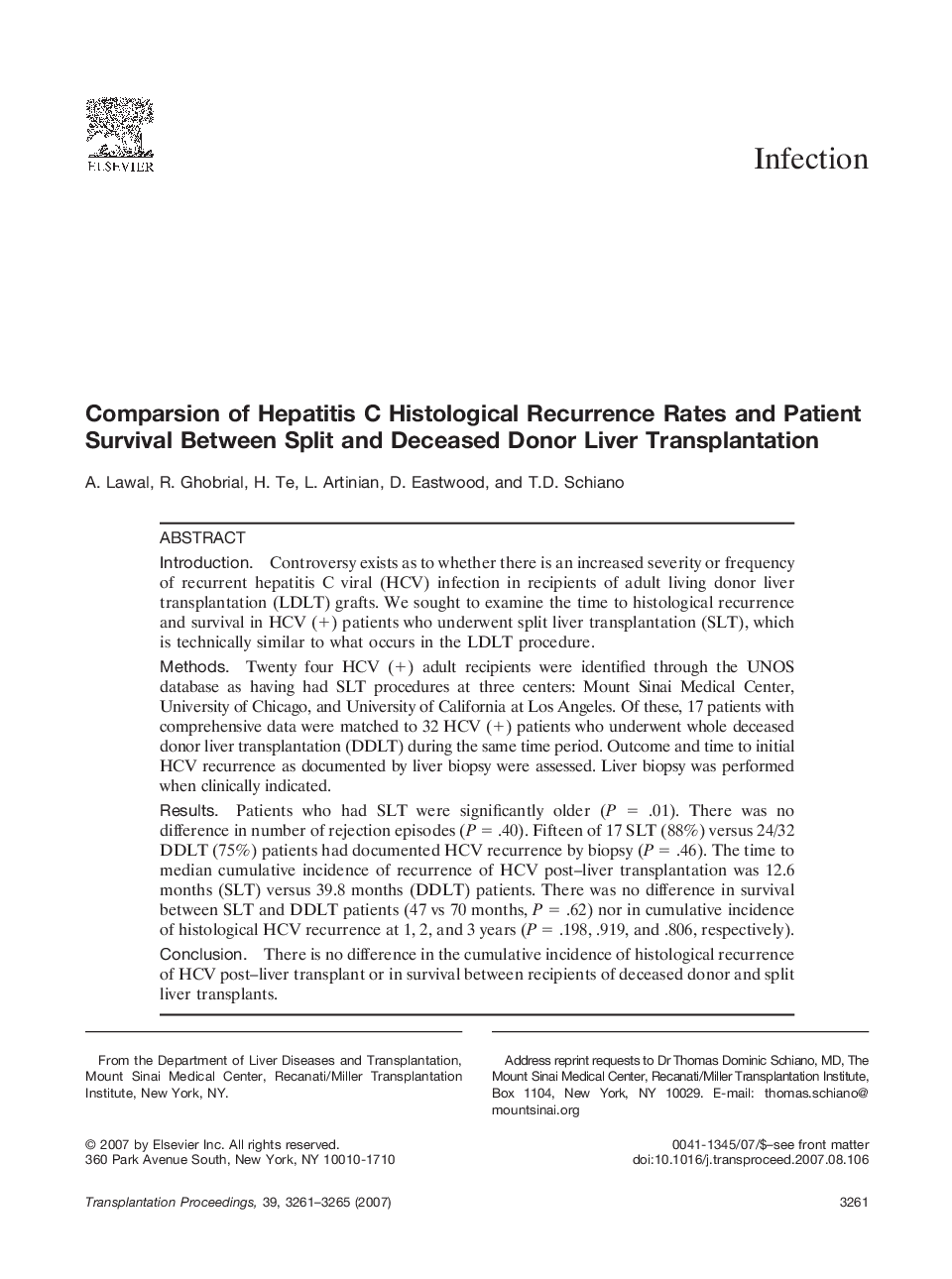| Article ID | Journal | Published Year | Pages | File Type |
|---|---|---|---|---|
| 4262769 | Transplantation Proceedings | 2007 | 5 Pages |
IntroductionControversy exists as to whether there is an increased severity or frequency of recurrent hepatitis C viral (HCV) infection in recipients of adult living donor liver transplantation (LDLT) grafts. We sought to examine the time to histological recurrence and survival in HCV (+) patients who underwent split liver transplantation (SLT), which is technically similar to what occurs in the LDLT procedure.MethodsTwenty four HCV (+) adult recipients were identified through the UNOS database as having had SLT procedures at three centers: Mount Sinai Medical Center, University of Chicago, and University of California at Los Angeles. Of these, 17 patients with comprehensive data were matched to 32 HCV (+) patients who underwent whole deceased donor liver transplantation (DDLT) during the same time period. Outcome and time to initial HCV recurrence as documented by liver biopsy were assessed. Liver biopsy was performed when clinically indicated.ResultsPatients who had SLT were significantly older (P = .01). There was no difference in number of rejection episodes (P = .40). Fifteen of 17 SLT (88%) versus 24/32 DDLT (75%) patients had documented HCV recurrence by biopsy (P = .46). The time to median cumulative incidence of recurrence of HCV post–liver transplantation was 12.6 months (SLT) versus 39.8 months (DDLT) patients. There was no difference in survival between SLT and DDLT patients (47 vs 70 months, P = .62) nor in cumulative incidence of histological HCV recurrence at 1, 2, and 3 years (P = .198, .919, and .806, respectively).ConclusionThere is no difference in the cumulative incidence of histological recurrence of HCV post–liver transplant or in survival between recipients of deceased donor and split liver transplants.
